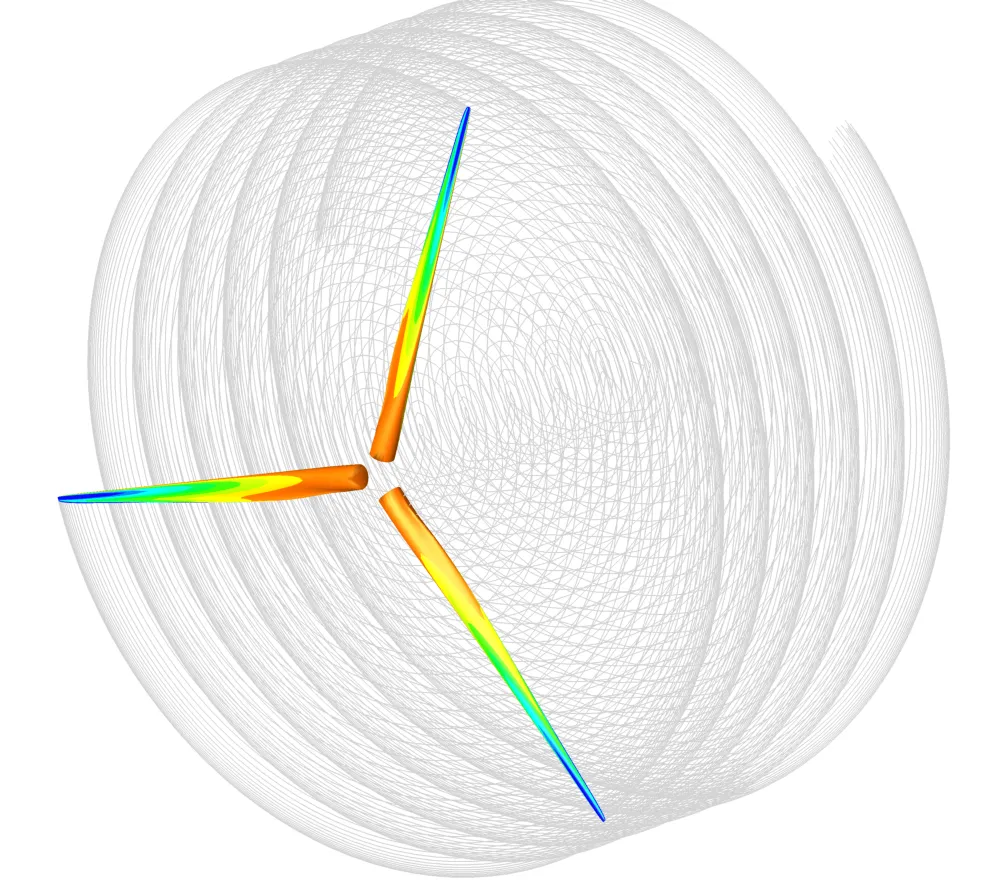Click the boxes below to see the many solutions FlightStream can provide.
FlightStream® enables users to generate steady-flow propeller slipstream effects on airplane simulations using actuator discs. These propeller actuator models allow for the evaluation of slipstream momentum, at no reduction in solver speed and agility. Designed to be computationally complimentary, you can add as many propeller actuators as your airplane needs. Place them in any orientation, size or a local coordinate system. All you need is the thrust, power and RPM of the propeller to simulate the steady-state effects. This is a perfect tool for the aircraft designer!
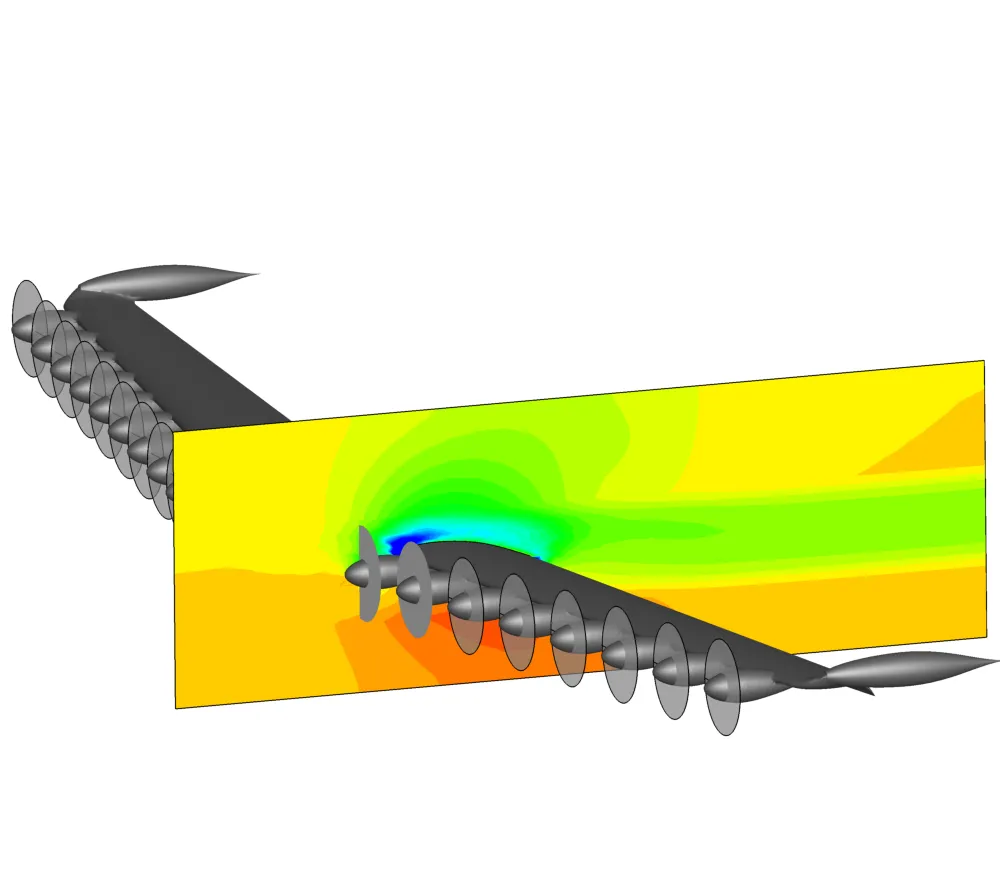
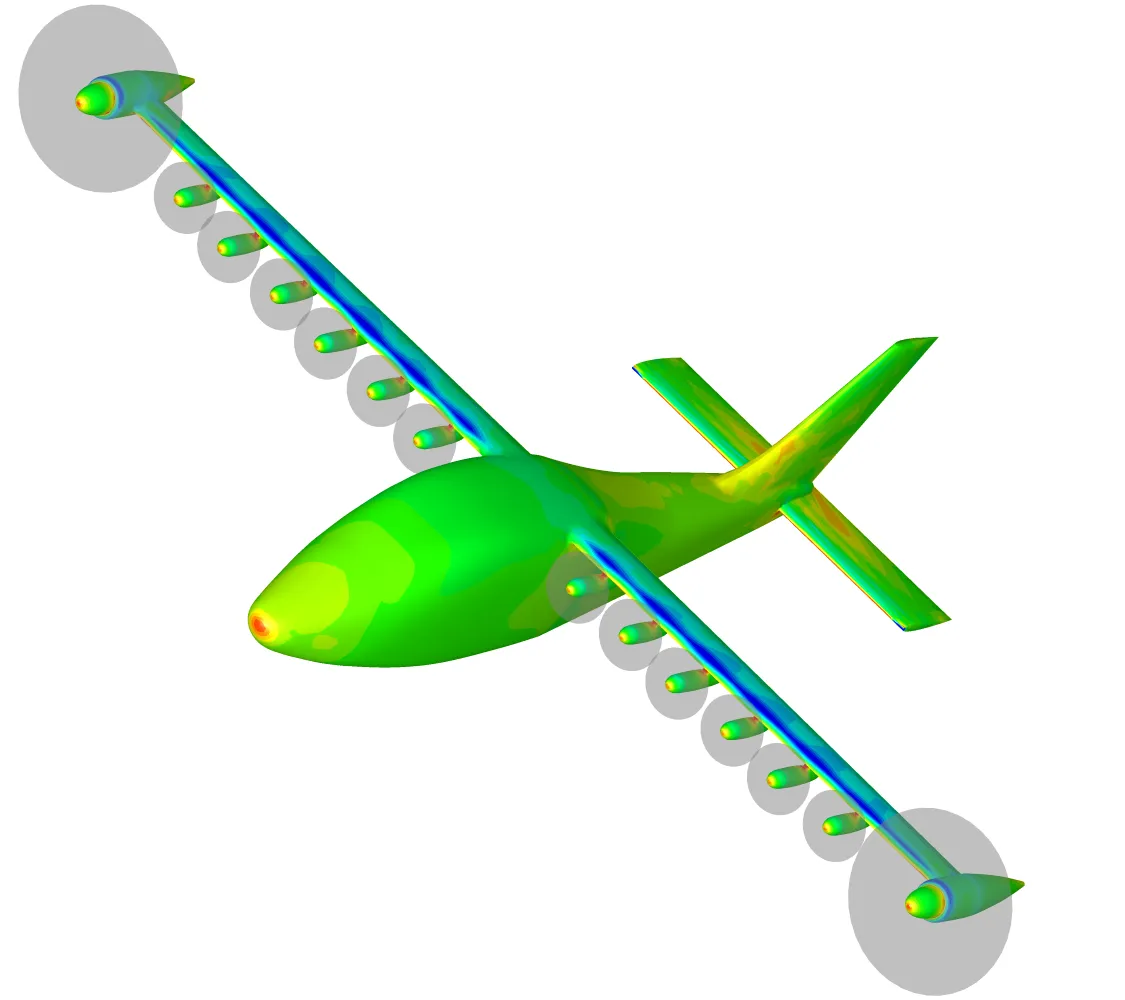
FlightStream® has a fully-integrated aeroacoustics toolbox implemented under a NASA-funded STTR activity. This toolbox is capable of modeling both tonal and broadband noise components of UAM propellers, rotors and flexible structures. FlightStream exports all FAA vehicle certification acoustic data at a click of a button!

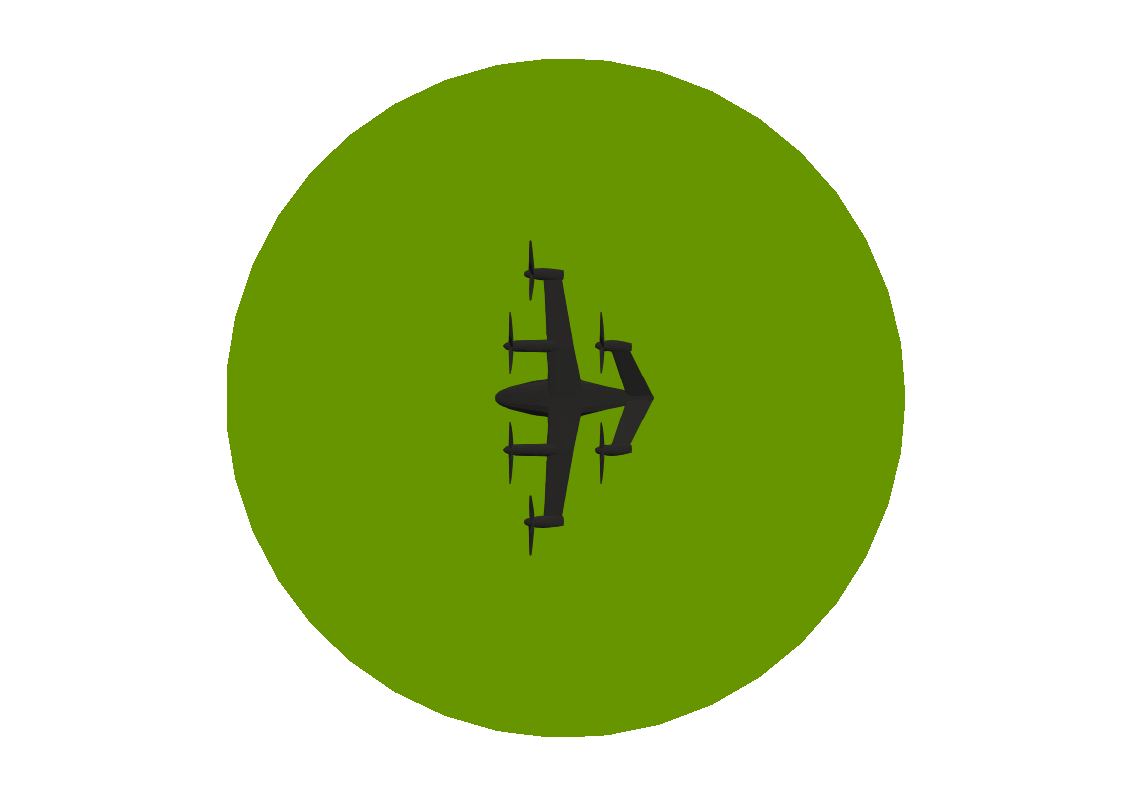
In partnership with AFWERX, we have expanded the classic subsonic solver within FlightStream to model nonlinear transonic flows. We have also added dedicated solvers for supersonic and hypersonic flow modeling, making FlightStream a true pan-Mach number modeling solution. Even while capturing detailed high-speed flow physics, these new solvers are still surface-based, maintaining the significant speed advantage afforded by FlightStream.
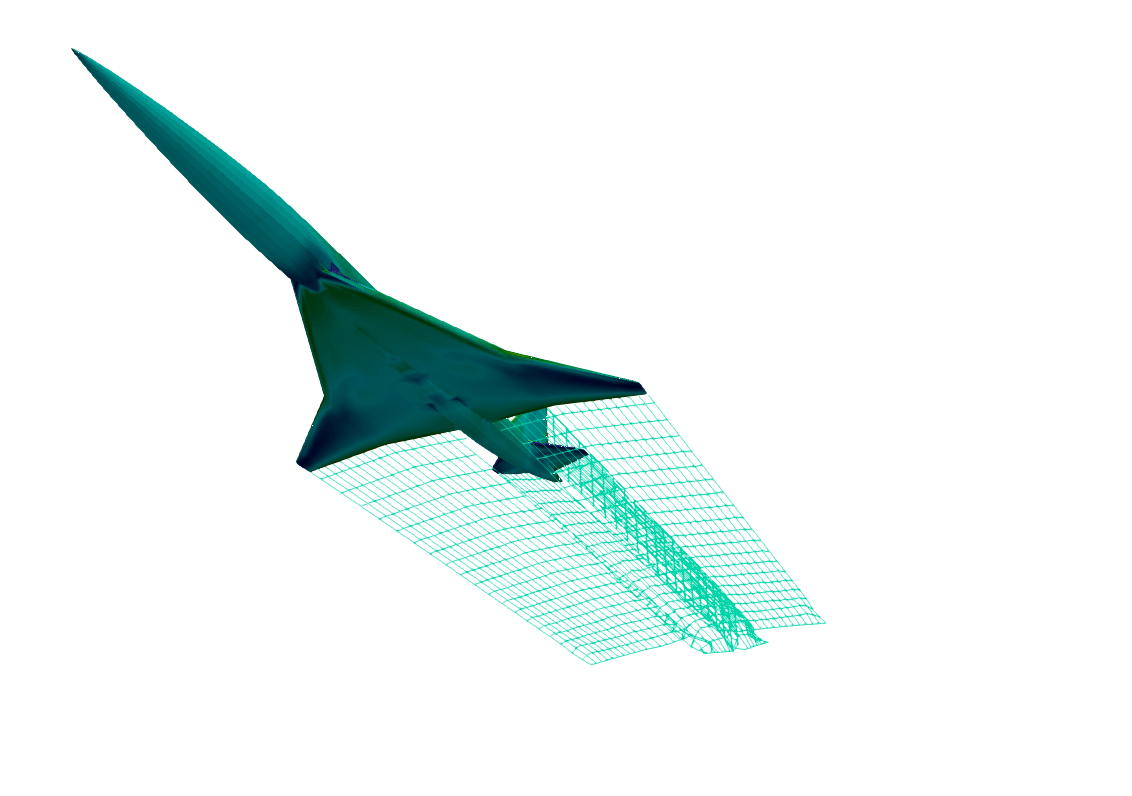
One of the most powerful features of the FlightStream® unsteady solver is its integrated 6DOF motion module. This 6DOF integration allows rigid-body motion to be applied at the component or vehicle level, enabling the early design rapid simulation of store separation, vehicle gust and turbulence response and passenger ride quality! Reduce computational time from days to hours as compared to conventional CFD.
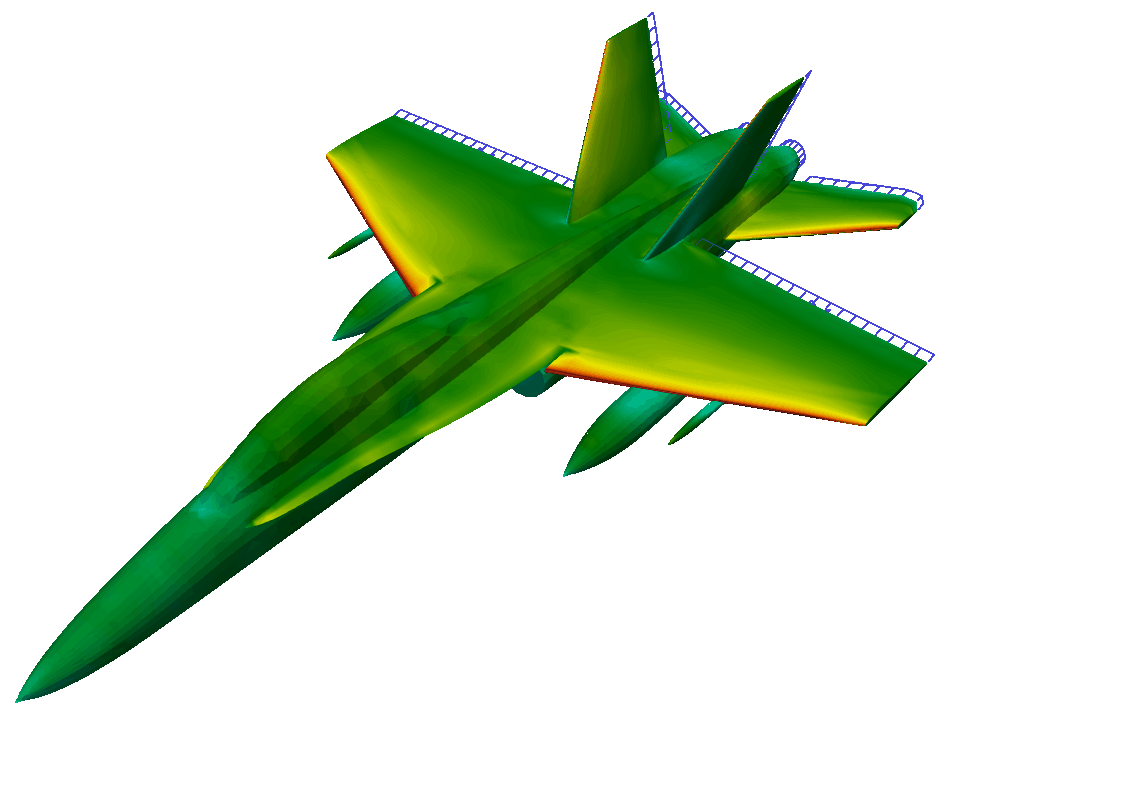
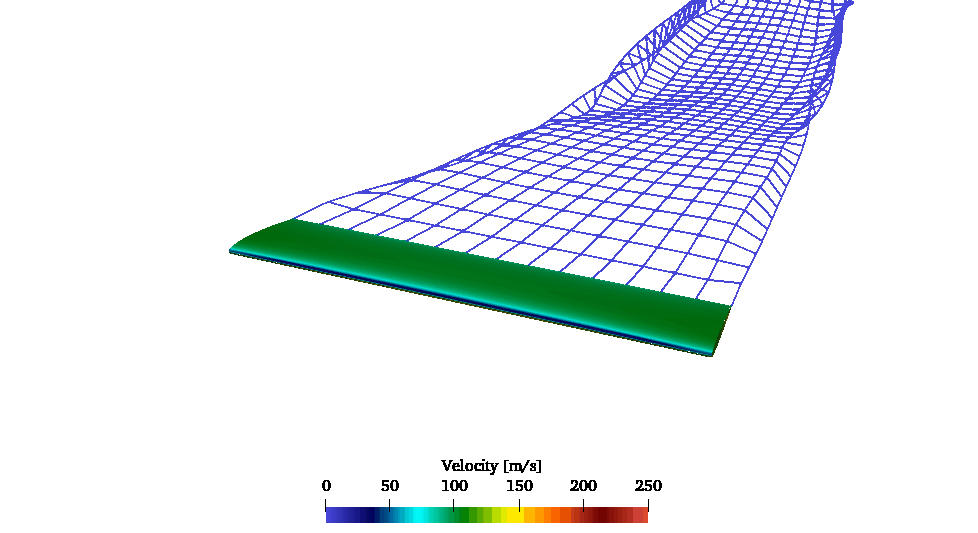
By coupling FlightStream® with your structural analysis software, FSI simulations can be performed to predict the effects of fluid forces on the structural integrity of your design. Automated solid-body morphing allows the solver to close the loop and generate aeroelastic and flight-dynamics analyses within minutes.
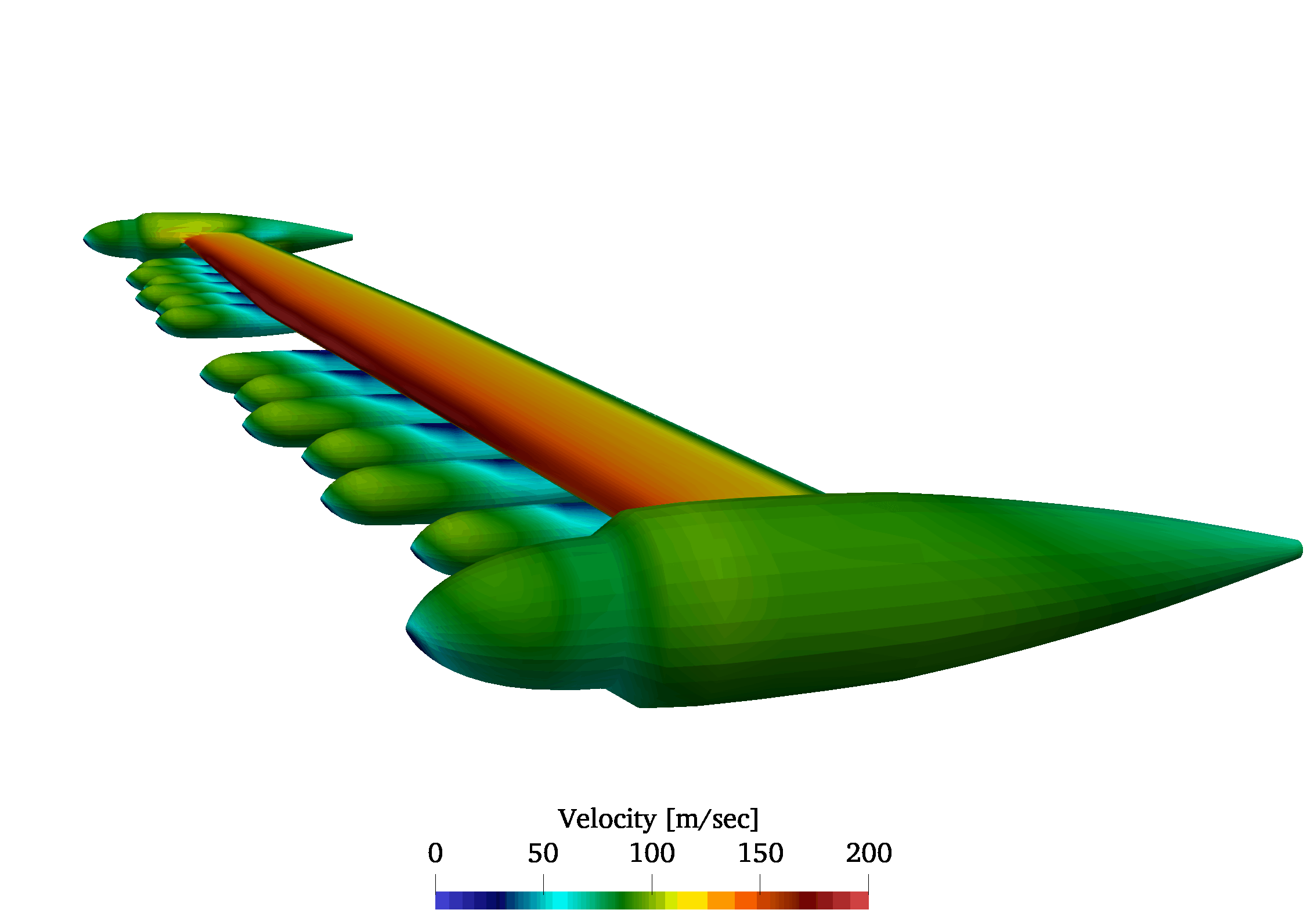
Use the mass-flow and velocity inlet boundaries deep inside the vehicle, right on the compressor fan face. Model the intricate internal flow in detail to compute the total pressure losses and viscous effects. You can even model solid rocket motor internal flows with FlightStream!
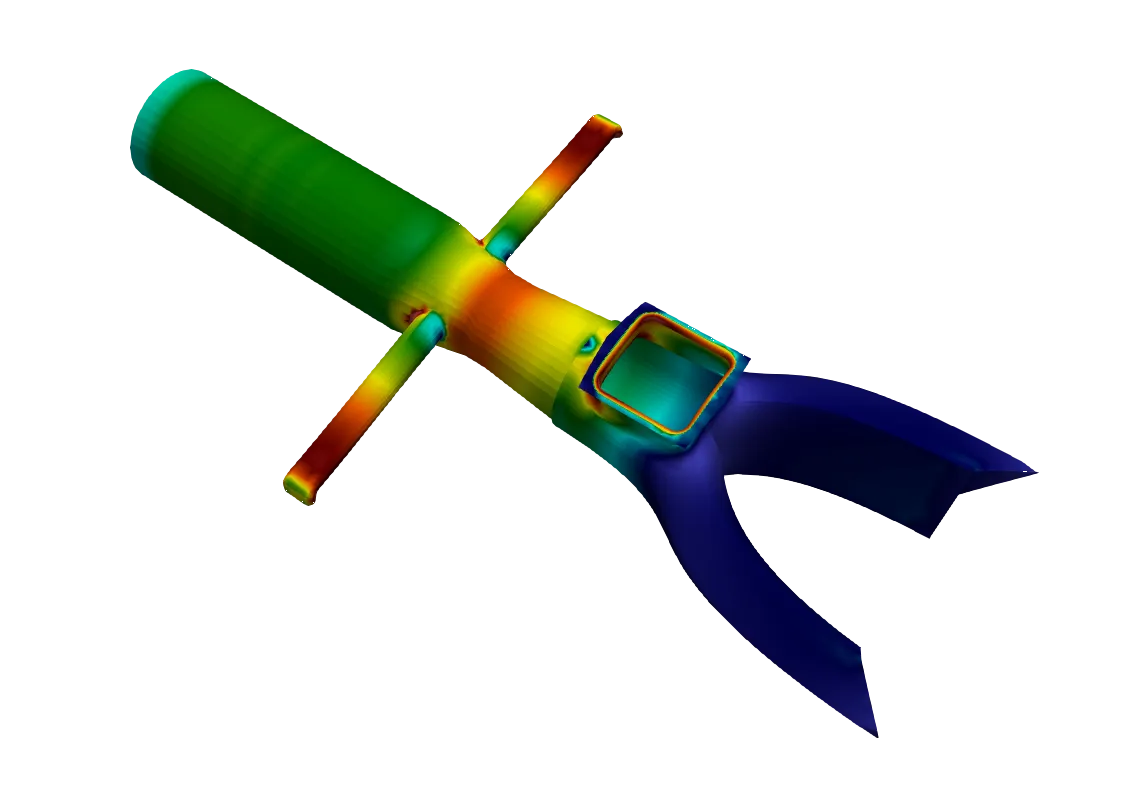
FlightStream® has unique and innovative enhancements to its solver, designed to enable easy modeling of control surfaces. Capable of modeling control surfaces in all levels of geometric fidelity, from faired, to gapped, to multi-flap systems. Consequently, you can simulate control surface motion for trimming, S&C and other analysis quite readily!
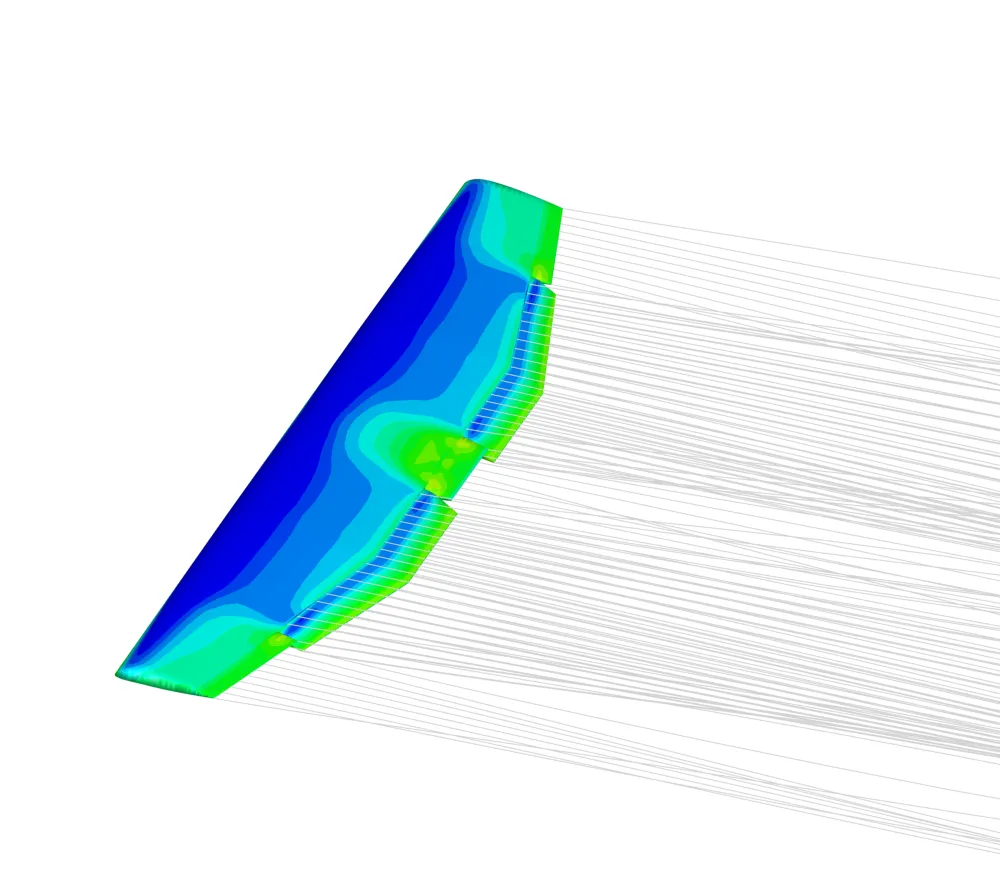

Assess how your vehicle’s engine integration affects overall performance aerodynamically. Use simulations for operational engine inlets with specific velocity profiles and mass-flow rates. Accurately model nacelles to examine their aerodynamic influence based on size, shape, and placement.
FlightStream® enables simultaneous modeling of engine inlets, exhausts, and propulsion performance. Implement velocity and mass-flow boundary conditions at the engine inlet, and use actuator-based models for jet exhaust. This creates a realistic aero-propulsive environment, accurately representing fluid flow. You can also cascade jet exhaust actuators to incorporate both core and fan exhausts.

Use the unsteady solver in FlightStream to simulate complex helicopter aerodynamics and their performance! Use the ability to specify custom cyclic and collective profiles along with the cascading motion definition feature to analyze main rotor operation. Test the vehicle in all flight conditions from hover, to transition, to forward flight!
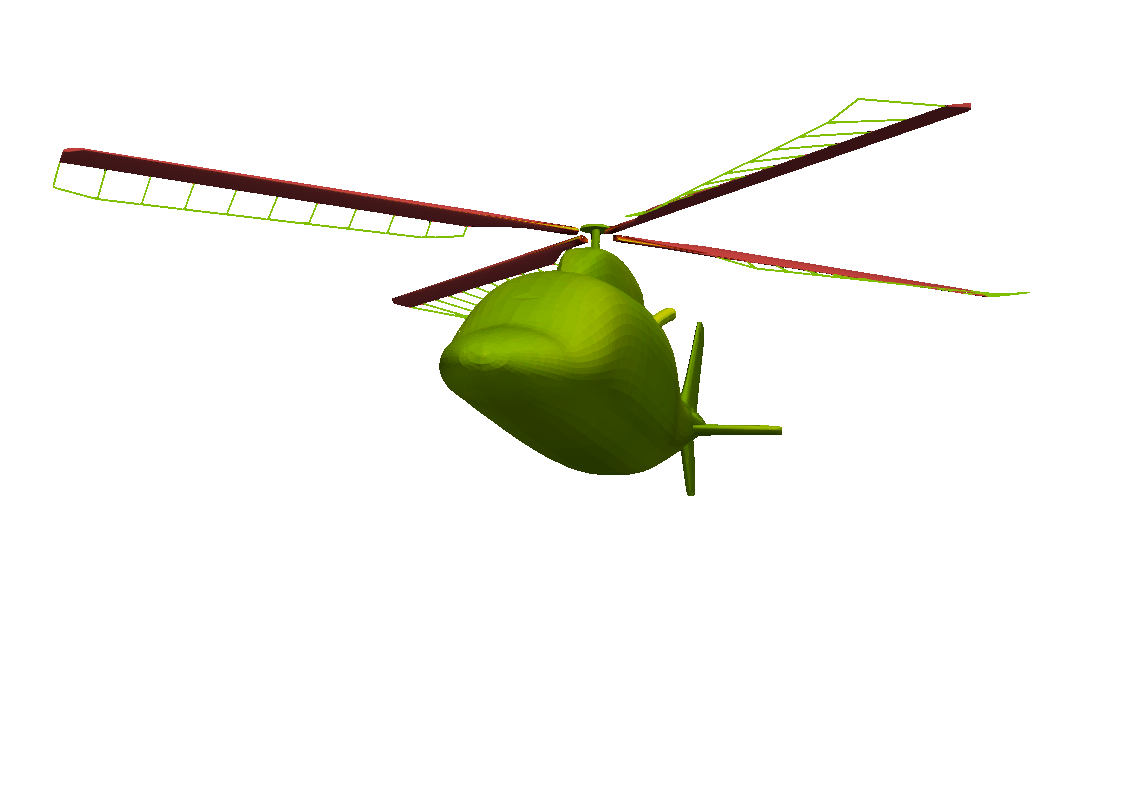

FlightStream® has the ability to model complex, custom, user-defined, stacked motion types. This allows for the real-time time-accurate modeling of complex vehicle motions such as VTOL transitions, helicopter rotor cyclic and collective motions, advanced flap-track motions and vehicle maneuvers with control effector actions.


In addition to the steady-flow actuator models and the rotating-frame steady solver, FlightStream® also has a fully unsteady flow solver that can simulate arbitrary motion definitions of all kinds: rotation, translation, accelerations, flapping, and morphing. Since the solver works with only a surface mesh, no advanced volumetric modeling is required, but full volumetric effects (including viscous flow!) is still computed by the solver!

FlightStream® has a fully viscous-coupled non-linear flow solver that allows the accurate physics-based capture of boundary layer flow and its impact on the vehicle aerodynamics. Use FlightStream® to compute accurate boundary layer drag force results, viscous-flow ingestion physics affecting propulsors on BLI-configured aircraft, effects on lift and moment distributions due to thick boundary layers at high incidence angles and the onset of natural laminar flow instabilities that lead to transition.

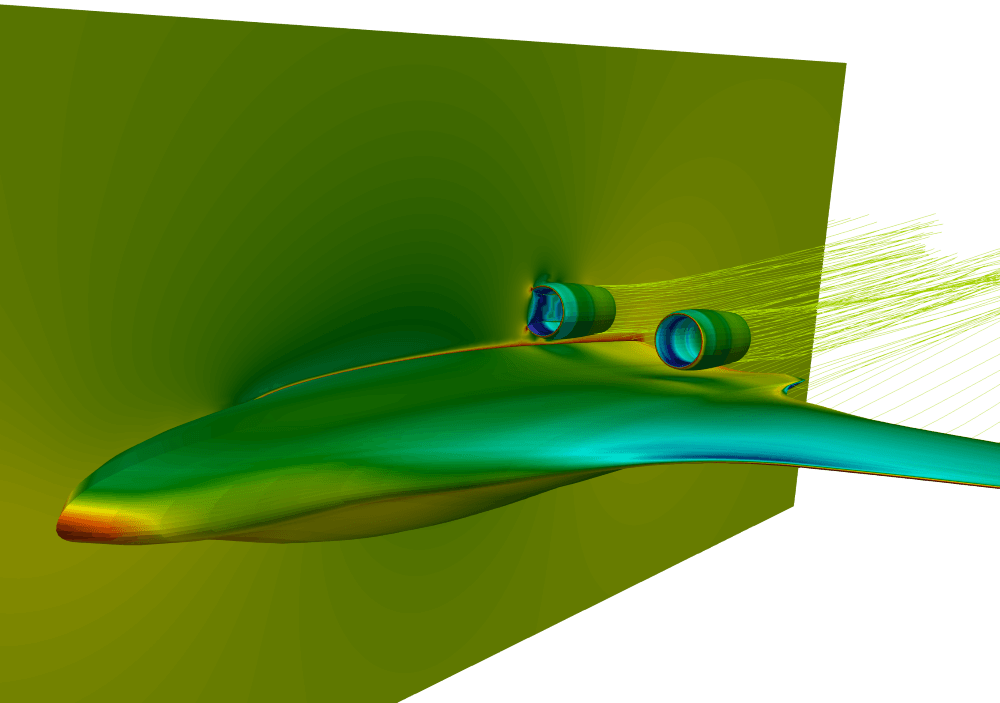
Originally designed with the aerospace industry in mind, FlightStream has undergone extensive validations in this field. From commericial jets to UAV drones to rotorcraft, it has done it all. Aerodynamic coefficient calculations, air loads, and unsteady simulations are handled with ease. Toolboxes such as the Solver Sweeper and Stability & Control toolboxes simplify the process of executing common jobs.
Discover why FlightStream is used by the top aerospace companies in the world.


FlightStream, while primarily renowned for its aerodynamic applications, also offers valuable insights into hydrodynamic scenarios, such as those involving underwater submarines. The principles governing fluid dynamics are applicable in both air and water, allowing FlightStream’s robust simulation capabilities to be utilized for submarine design and analysis. Users can leverage FlightStream to simulate the flow around submarine hulls, optimizing shapes for minimal resistance and enhanced maneuverability.
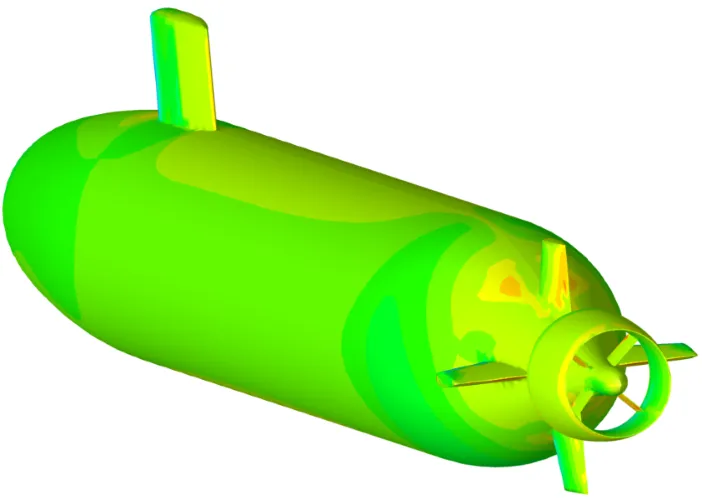
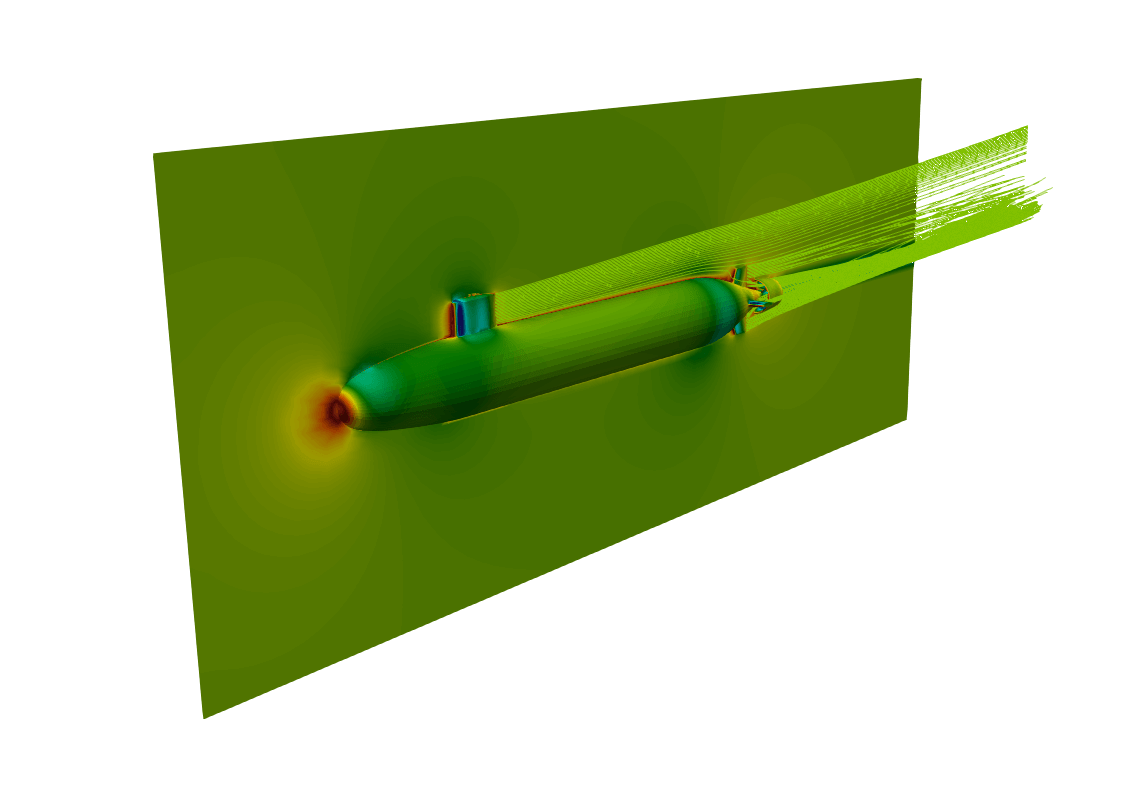
FlightStream’s capabilities extend to solving turbomachinery problems, providing a powerful tool for engineers to simulate and analyze complex flows in turbines and compressors. The software’s Unsteady solver feature is particularly beneficial for turbomachinery applications, where the dynamic interaction between rotating and stationary components is critical. With FlightStream, users can tap into a robust and user-friendly environment to tackle the unique challenges presented by turbomachinery designs, enhancing their ability to innovate and improve system efficiencies.
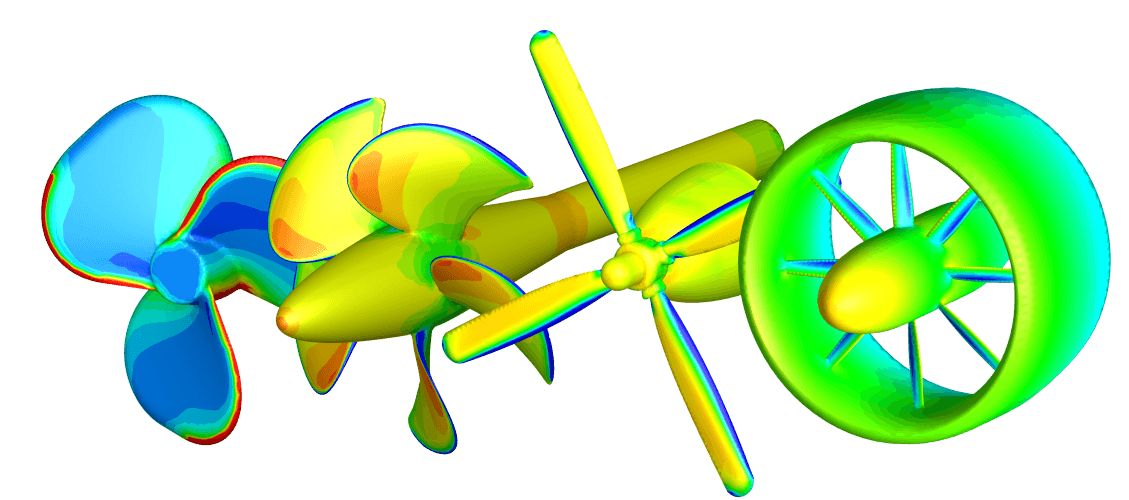
FlightStream offers a robust solution for engineers and researchers working on renewable energy problems, especially in the context of wind turbines. By utilizing FlightStream’s advanced aerodynamic simulation capabilities, users can accurately model and analyze the complex flow fields around wind turbines, optimizing blade design for maximum efficiency and performance. Additionally, FlightStream includes gust modeling features, allowing users to simulate and understand the impact of transient wind events on turbine performance and structural integrity. This capability is crucial for designing turbines that can withstand variable and harsh weather conditions, ensuring reliability and longevity. With FlightStream, professionals in the renewable energy sector can enhance their understanding of wind turbine aerodynamics, drive design improvements, and contribute to the development of more efficient and sustainable energy solutions.
